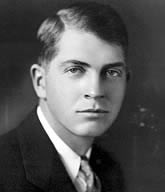
Against the advice of his family, who saw cattle ranching as a thing of the past, young Con cowboyed for the Dana Ranch in Wyoming in 1927, and came to work at the Kohrs ranch as a hired hand in l929. His great love of animals thrust him into the role of ranch manager. He rode in one day to find an old horse had fallen as a shoer worked on it. The foreman was beating the animal with a whip. Con grabbed the whip and knocked the foreman cold. His satisfaction at being selected by the Kohrs Trust to replace the foreman was tempered by regret when the horse died of its injuries, but the incident began a half century of stock raising in which the welfare of his animals was paramount. Warren purchased the ranch, the house, and its contents from the Trust in l940. His tenure was most notable for two things: his commitment to the livestock industry and his determination to preserve the buildings, artifacts, records and lore of his grandfather and great-uncle. His management of the ranch began at the worst of the drought and Depression plaguing the United States in the 1930s. He acquired additional acreage to provide summer range for his growing herd of registered Hereford cattle, while the irrigated pastures of the home ranch were cropped of the hay which fed his stock through the winter. He upgraded his livestock, raising registered Belgian draft horses as well as Hereford cattle. The advent of World War II caused a shortage of team drivers and consequent decline in the use of draft horses. In the mid-l940s, the Hereford industry was hit hard when a strain of dwarfism appeared in the top lines of the breed. Warren didn't escape this crisis. T.T. Triumphant, a bull which he had purchased for a record $32,500, was found to carry the dwarf gene. Though Warren never achieved the financial success of his grandfather and great-uncle, his contribution as a cattleman was unquestioned. He served as president of both the Board of Livestock Commissioners, and the Montana Stockgrowers Association. Among his industry responsibilities was the establishment and authorization of livestock auctions, which are managed in Montana as public utilities, and which remain one of the cattleman's most important marketing tools. The influence of Warren's physician-father was expressed in his veterinary skills. Though he lacked formal training, Warren was in constant demand to assist with calving problems, vaccinations, and other medical emergencies. He experimented with artificial insemination in the breeding of draft horses, believing correctly that the technique could reduce disease transmission. He ended his registered Hereford breeding program in l958, and continued to raise purebred Herefords even after selling the core of the home ranch to the National Park Service in l972. The ranch had been designated a National Historic Landmark in 1960. Throughout his career, he preserved the Kohrs home ranch and every object and record associated with it, assisted by his wife, Nell Warren. His own papers were as meticulously maintained as his grandfather's, providing historians with a nearly unbroken, 120-year record of the cattle industry. Warren's abiding contribution is the Grant-Kohrs Ranch National Historic Site, a virtual time machine to America's western cattle ranching heritage, spanning the end of the fur trade through modern, mechanized feedlot operations. Warren continued to live at the ranch until his death in l993 at the age of 85. |
Last updated: February 24, 2015
